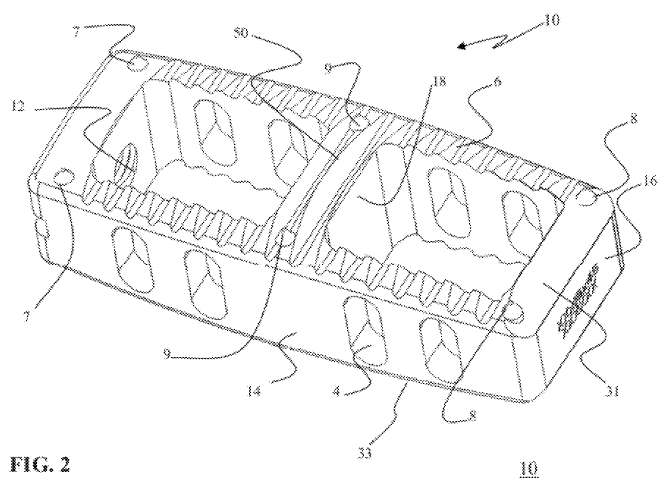The USPTO must provide a reasoned explanation why the person of ordinary skill in the art would combine the prior art references to conclude that an invention is obvious. If the USPTO fails to do this, the obviousness rejection is not valid.
The case of In re NuVasive, Inc., 842 F.3d 1376, 1382 (Fed. Cir. 2016) demonstrates this principle. Medtronic, Inc. petitioned the USPTO to invalid claims of NuVasive’s Patent No. 8,361,156 (the ‘156 patent). The ‘156 patent was directed to a spinal fusion implant.

Medtronic asserted that the challenged claims of the ‘156 patent were obvious in view of four references: a Synthes Vertebral Spacer-PR brochure (SVS-PR Vrochure), a Telamon Verte-Stack PEEK Vertebral Body Spacer brochure (“Telamon brochure”) a Telamon Posterior Impacted Fusion Devices guide (“Telamon guide”), and U.S. Patent Application Publication No. 2003/0028249 (“Baccelli”). The USPTO found the challenged claims were obvious over a combination of Baccelli and either the SVSPR brochure or the Telamon references.
But in reaching this conclusion the USPTO failed to explain the reason why a person skilled in the art would have been motivated to modify either the SVS-PR device or the Telamon implants, in light of Baccelli, to place radiopaque marketers “proximate to said medial plane,” as the ’156 patent teaches. The court reversed the obviousness determination of the USPTO for failing to provide the necessary reasoned explanation.
The USPTO must articulate a reason why a person skilled in the art would combine the prior art references. That reason and other USPTO findings must have an adequate evidentiary basis. And the USPTO must provide a satisfactory explanation for its motivation reasoning that includes a rational connection to the evidence. Further merely conclusory statements are not sufficient.
If the USPTO fails to provide a reason to combine or if the reason to combine is not technically valid or is not rationally connected to the evidence, then the obviousness rejection is improper. Therefore, when receiving a obviousness rejection it is important to (1) determine whether the USPTO provided a reason to combine references and (2) whether that reason is valid and/or has support in the record.